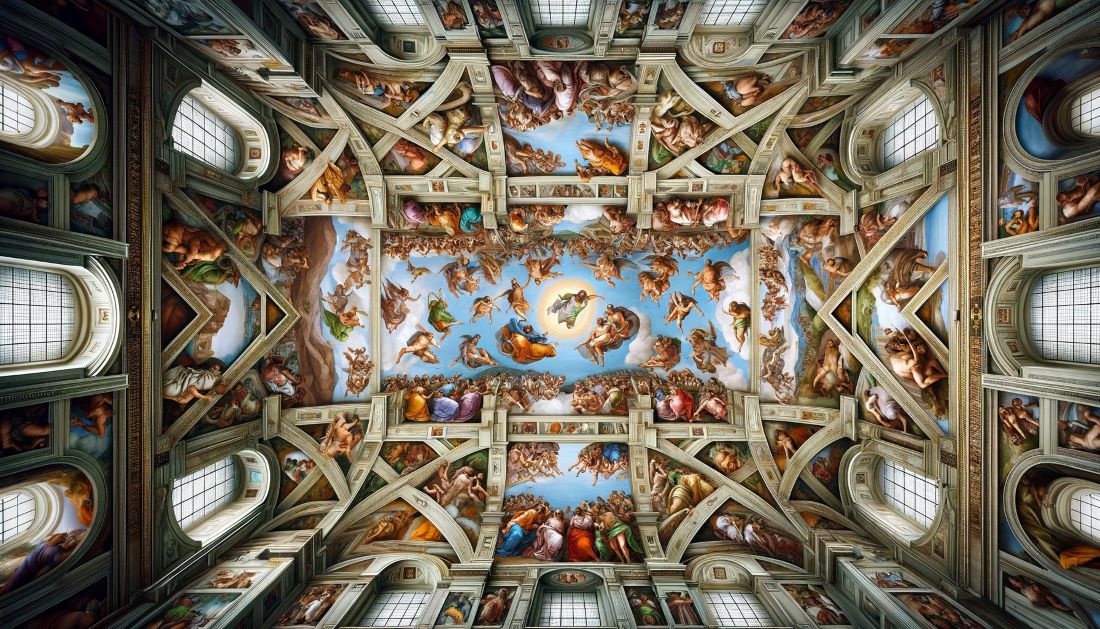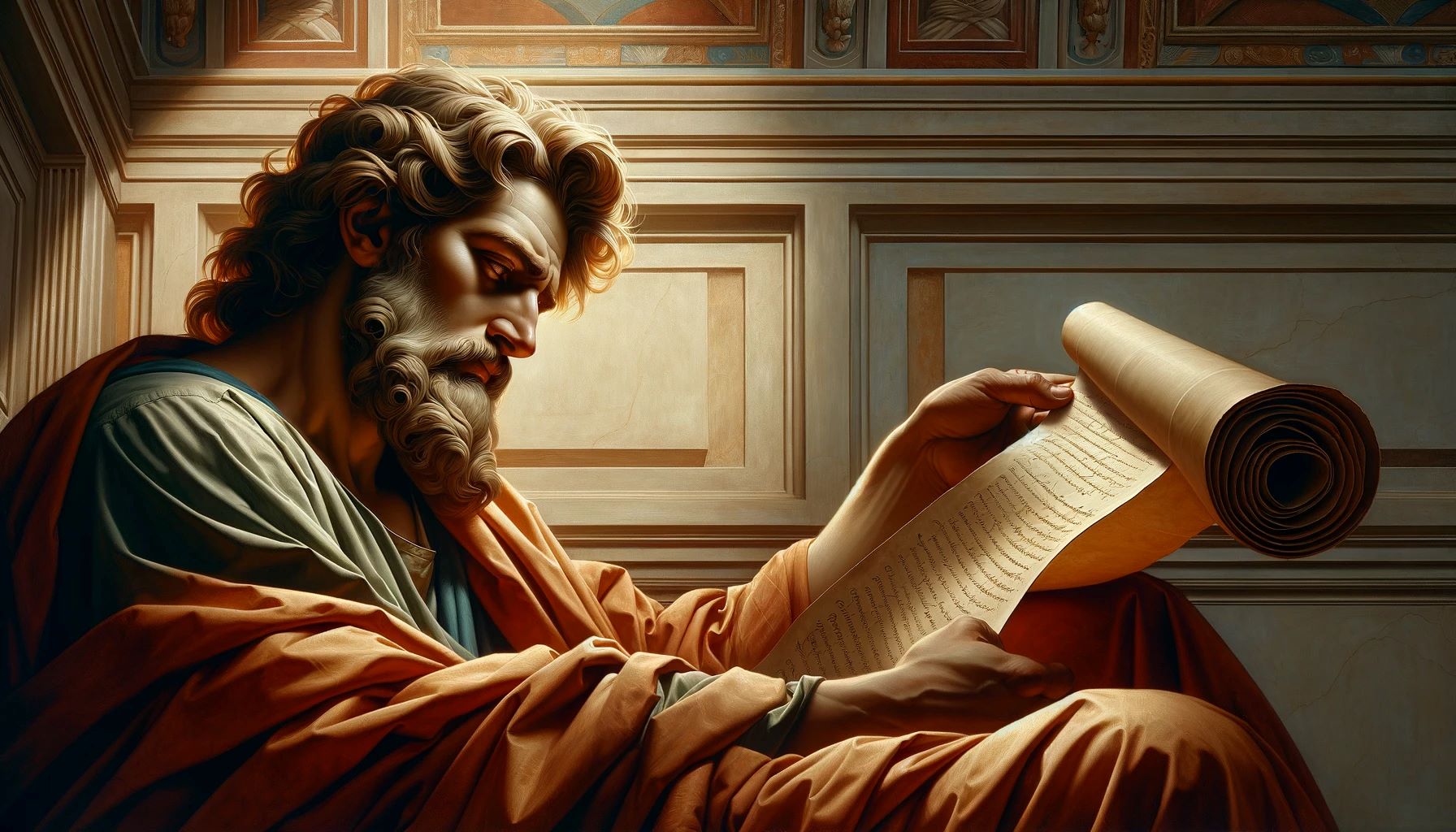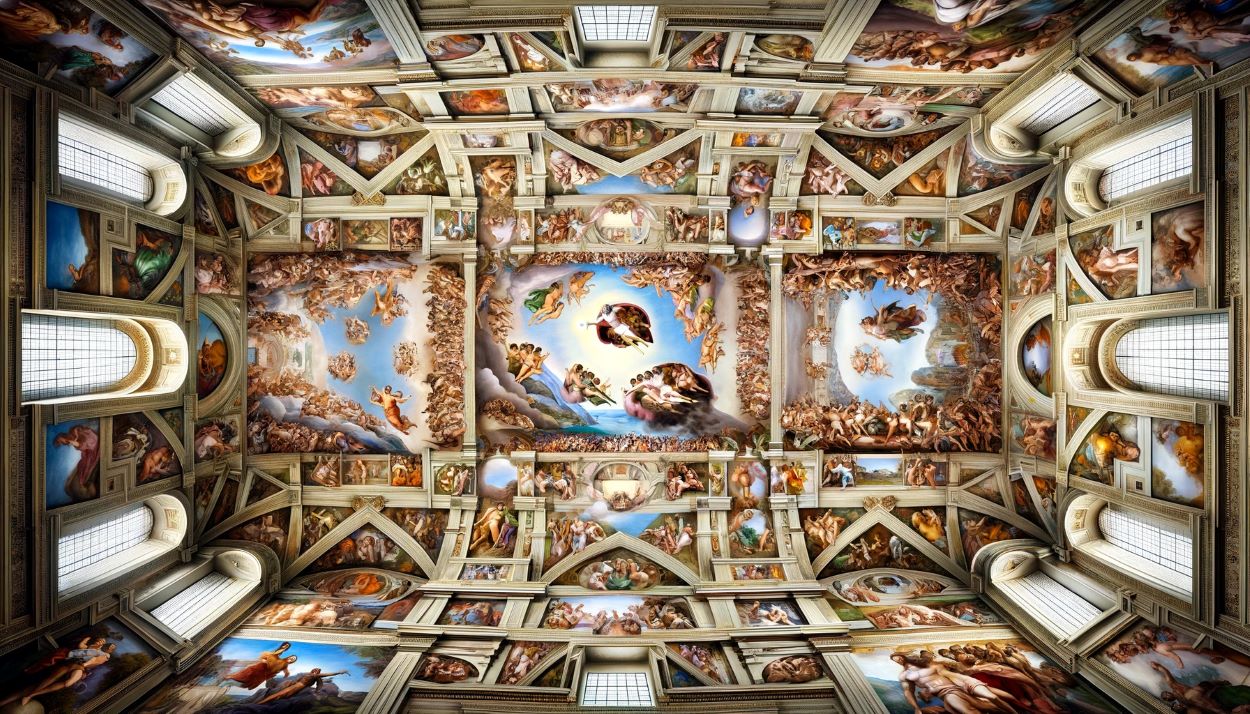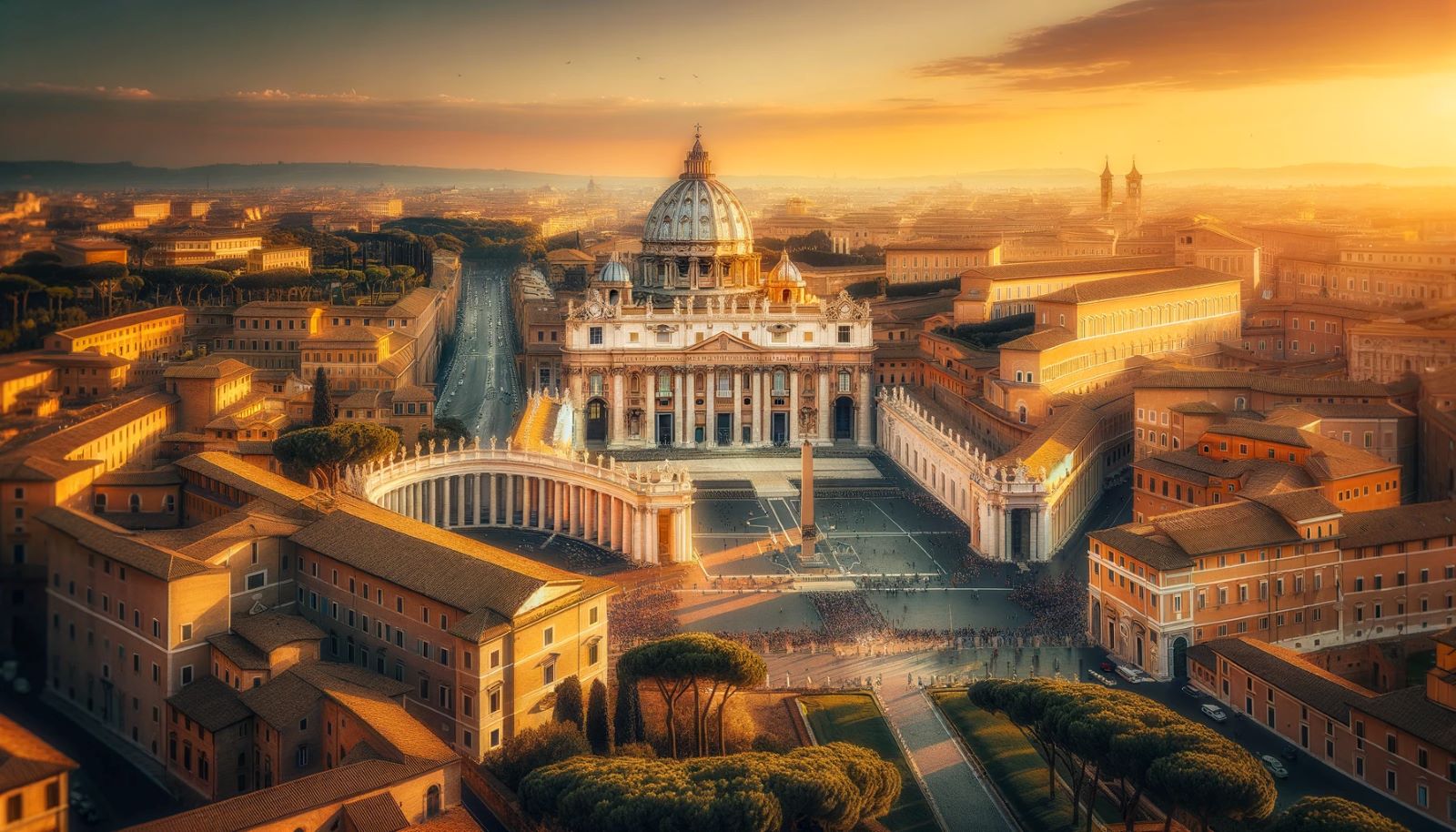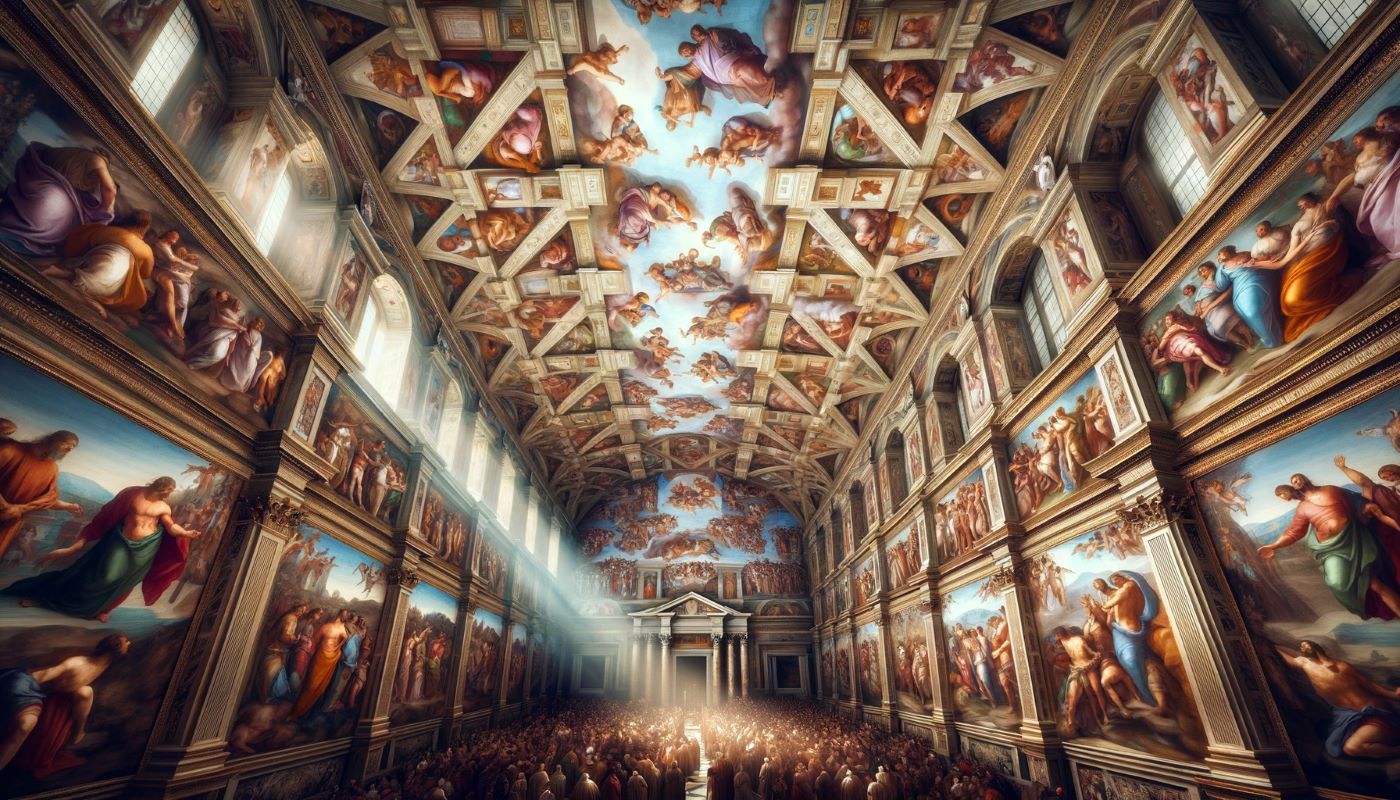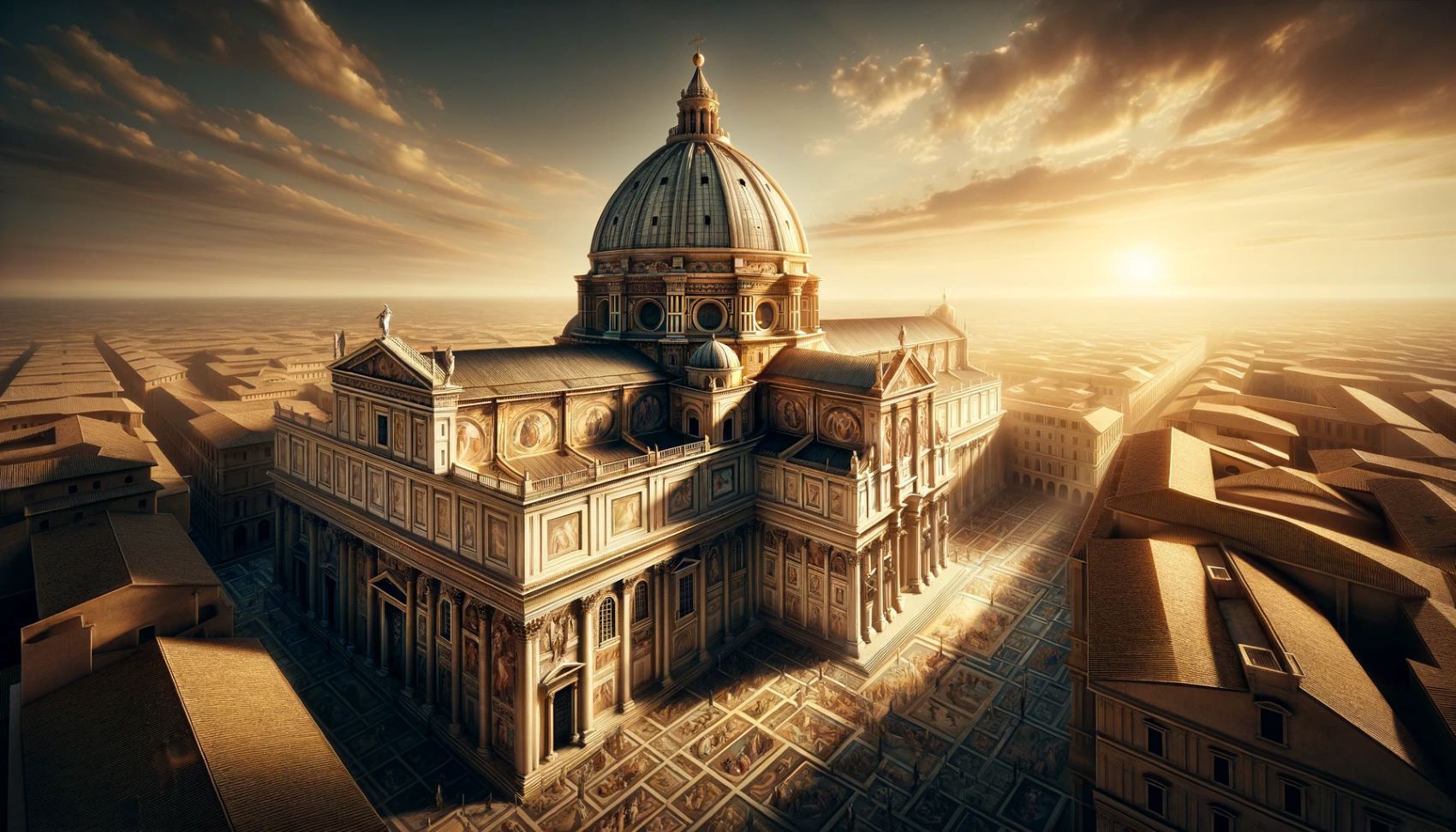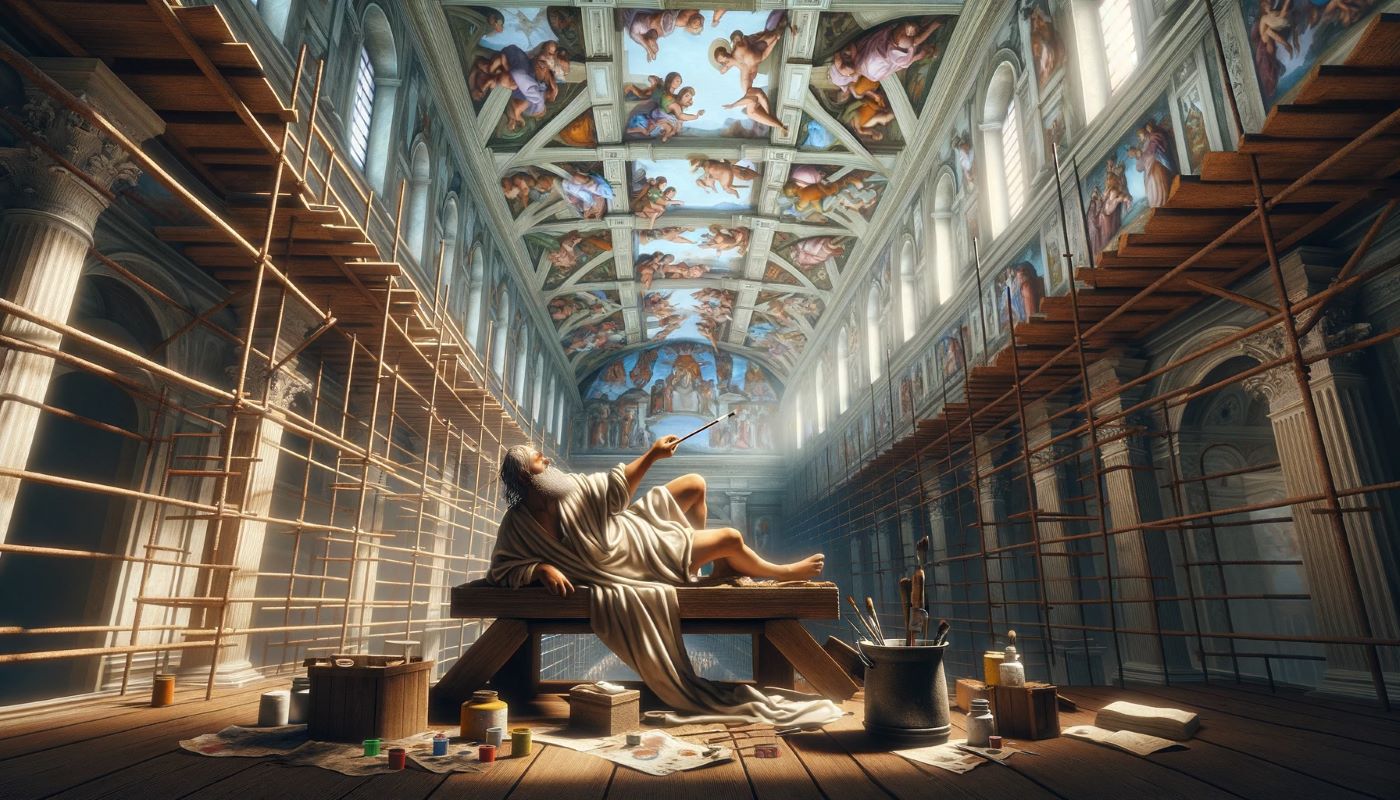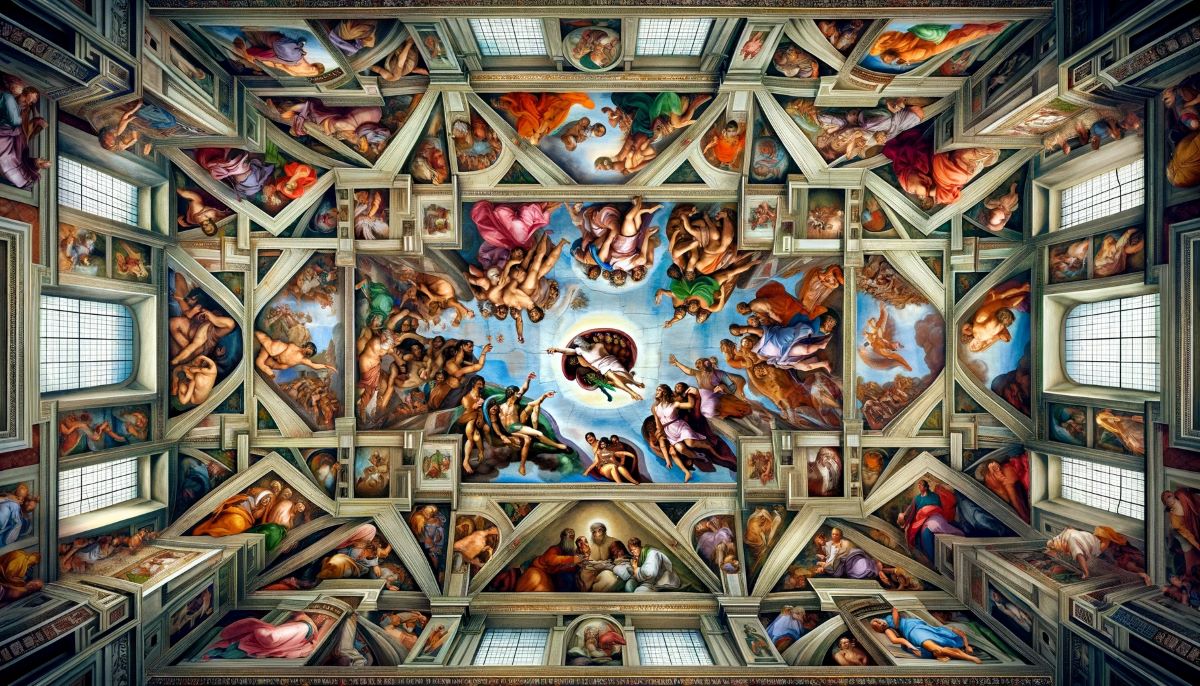Home>Arts and Culture>What Is Sistine Chapel Known For
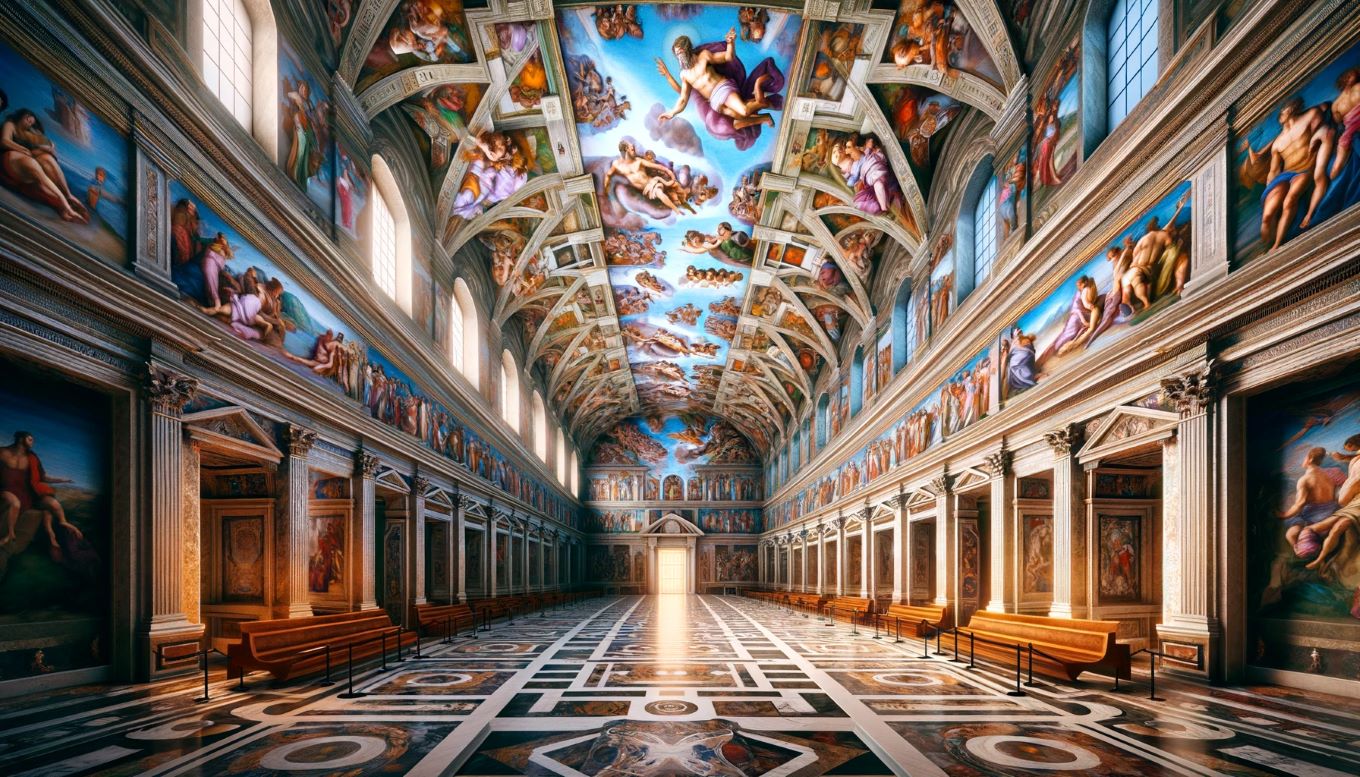

Arts and Culture
What Is Sistine Chapel Known For
Published: March 4, 2024
Peter Smith, Editorial Director at Christian.net, combines deep insights into faith, politics, and culture to lead content creation that resonates widely. Awarded for his contributions to religious discourse, he previously headed a major organization for religious communicators, enhancing dialogue on faith's societal impacts.
Discover the artistic wonders of the Sistine Chapel, renowned for its breathtaking frescoes and significant role in art history. Explore the intersection of religion, culture, and creativity in this iconic masterpiece of arts and culture.
(Many of the links in this article redirect to a specific reviewed product. Your purchase of these products through affiliate links helps to generate commission for Christian.net, at no extra cost. Learn more)
Table of Contents
History of the Sistine Chapel
The Sistine Chapel is a renowned chapel located in Vatican City, the heart of the Catholic Church. Its history dates back to the 15th century when Pope Sixtus IV commissioned its construction. The chapel was named after Pope Sixtus IV, who oversaw its completion in 1481. The primary purpose of the Sistine Chapel was to serve as a place of worship and for the celebration of Mass. However, it is most famous for its stunning artwork, which was commissioned by various popes throughout history. The history of the Sistine Chapel is rich and fascinating, making it a significant cultural and religious landmark.
-
Commissioning of the Chapel: The construction of the Sistine Chapel was initiated by Pope Sixtus IV, who wanted to create a place that would serve as a site for important ceremonies and gatherings of the Catholic Church. The chapel was designed by a team of renowned architects, including Baccio Pontelli and Giovanni dei Dolci.
-
Artistic Transformation: The Sistine Chapel underwent a remarkable transformation during the Renaissance period. Pope Julius II, a great patron of the arts, commissioned the renowned artist Michelangelo to adorn the ceiling with intricate frescoes. This marked the beginning of a new chapter in the history of the chapel, as it became a showcase of unparalleled artistic brilliance.
-
Restoration and Preservation: Over the centuries, the Sistine Chapel has undergone several restoration projects to preserve its architectural and artistic integrity. The most notable of these was the restoration of Michelangelo's frescoes on the ceiling, which took nearly 20 years to complete. The restoration work revealed the true vibrancy and detail of the original artwork, ensuring that future generations could appreciate its beauty.
-
Continued Significance: Today, the Sistine Chapel continues to be a place of great religious and cultural significance. It serves as the site of the papal conclave, where the College of Cardinals gathers to elect a new pope. Additionally, it attracts millions of visitors from around the world who come to admire its breathtaking art and experience its spiritual aura.
The history of the Sistine Chapel is a testament to the enduring power of art and faith. From its humble beginnings as a place of worship to its transformation into a masterpiece of Renaissance art, the chapel stands as a symbol of human creativity and devotion. Its rich history continues to captivate and inspire all who have the privilege of experiencing its timeless beauty.
Read more: What Is The Value Of The Sistine Chapel
Architecture and Design of the Sistine Chapel
The Sistine Chapel is a remarkable example of Renaissance architecture, renowned for its harmonious proportions and exquisite design. The chapel was constructed between 1473 and 1481 under the supervision of a team of talented architects, including Baccio Pontelli and Giovanni dei Dolci. Its architectural style reflects the grandeur and elegance of the Italian Renaissance, characterized by a perfect blend of symmetry, proportion, and artistic embellishments.
The exterior of the Sistine Chapel exudes a sense of timeless beauty, with its simple yet dignified facade. The entrance is adorned with a magnificent bronze door, featuring intricate designs and religious motifs. The interior of the chapel is equally awe-inspiring, with its soaring vaulted ceiling and majestic altar. The architectural layout of the chapel is designed to create a sense of sacredness and reverence, with its carefully planned proportions and spatial arrangement.
One of the most striking features of the Sistine Chapel is its iconic ceiling, which was adorned with breathtaking frescoes by the legendary artist Michelangelo. The ceiling is a masterpiece of artistic and architectural harmony, with its intricate designs and vibrant colors. The architectural design of the ceiling, with its series of panels and arches, provides the perfect canvas for Michelangelo's timeless creations, including the famous "Creation of Adam" and "The Last Judgment."
The chapel's architectural and design elements are also imbued with symbolic significance, reflecting the spiritual and religious ideals of the Catholic Church. The use of geometric patterns, classical motifs, and biblical themes in the chapel's architecture serves to elevate the spiritual experience of the visitors and worshippers. Every aspect of the design, from the ornate altar to the meticulously crafted windows, contributes to the overall sense of divine beauty and transcendence.
In essence, the architecture and design of the Sistine Chapel stand as a testament to the genius of the Renaissance era and the enduring power of human creativity. Its harmonious proportions, exquisite details, and profound symbolism continue to captivate and inspire visitors from around the world, making it a timeless masterpiece of architectural and artistic achievement.
Famous Artworks in the Sistine Chapel
The Sistine Chapel is renowned for housing some of the most iconic and influential artworks in the history of Western art. The chapel's interior is adorned with a breathtaking ensemble of frescoes, paintings, and sculptures, each contributing to its status as a cultural treasure. Here are some of the most famous artworks that grace the walls and ceiling of the Sistine Chapel:
-
Ceiling Frescoes by Michelangelo: The crowning glory of the Sistine Chapel is undoubtedly the ceiling frescoes painted by Michelangelo between 1508 and 1512. The expansive ceiling is adorned with nine central panels depicting scenes from the Book of Genesis, including the iconic "Creation of Adam" where the hands of God and Adam almost touch. The frescoes are a testament to Michelangelo's unparalleled skill and artistic vision, showcasing a harmonious blend of human anatomy, emotion, and divine grandeur.
-
The Last Judgment: Adorning the altar wall of the Sistine Chapel, "The Last Judgment" is another monumental work by Michelangelo. Painted between 1536 and 1541, this awe-inspiring fresco depicts the Second Coming of Christ and the final judgment of humanity. The dynamic composition and powerful portrayal of the human form make it a compelling and thought-provoking masterpiece.
-
The Creation of Adam: One of the most recognizable images in the history of art, "The Creation of Adam" is a central panel on the ceiling of the Sistine Chapel. This iconic fresco portrays the moment when God breathes life into Adam, conveying a profound sense of divine energy and human potential. The image has become a symbol of creativity and the enduring connection between humanity and the divine.
-
The Delphic Sibyl and Libyan Sibyl: Among the numerous figures adorning the ceiling, the Delphic Sibyl and Libyan Sibyl stand out as exemplary representations of Michelangelo's mastery. These powerful female figures, depicted with grace and strength, embody the timeless ideals of wisdom and prophecy, adding depth and symbolism to the overall narrative of the ceiling frescoes.
-
The Creation of Eve: Another striking composition on the ceiling, "The Creation of Eve" portrays the moment when Eve is formed from the rib of Adam. The intricate details and emotive expressions in this fresco exemplify Michelangelo's ability to infuse profound human drama into his religious subject matter.
These famous artworks in the Sistine Chapel represent the pinnacle of Renaissance art and continue to inspire awe and admiration among visitors and art enthusiasts. Their enduring significance lies not only in their artistic brilliance but also in their profound spiritual and cultural resonance, making the Sistine Chapel a timeless repository of human creativity and religious devotion.
Influence and Legacy of the Sistine Chapel
The influence and legacy of the Sistine Chapel extend far beyond its physical walls, leaving an indelible mark on the worlds of art, religion, and culture. The artistic masterpieces housed within the chapel have served as a wellspring of inspiration for countless artists, influencing styles and techniques across generations. The awe-inspiring frescoes and sculptures created by renowned masters such as Michelangelo have set a standard of excellence that continues to resonate in the art world to this day. The Sistine Chapel's legacy as a bastion of artistic achievement has elevated the status of religious art, demonstrating its capacity to transcend the confines of traditional worship and speak to the universal human experience.
Beyond its artistic impact, the Sistine Chapel has also played a pivotal role in shaping the cultural and religious landscape of Western civilization. As a sacred space within the Vatican, the chapel stands as a tangible symbol of the enduring power and influence of the Catholic Church. Its significance as the site of papal ceremonies and the papal conclave, where the College of Cardinals gathers to elect a new pope, underscores its central role in the governance and continuity of the Church. The Sistine Chapel's association with the highest echelons of religious authority has solidified its place as a spiritual and historical touchstone, perpetuating its legacy for centuries.
Moreover, the Sistine Chapel has left an indelible mark on the collective imagination of humanity, transcending religious boundaries to become a global cultural icon. Its timeless artworks, such as Michelangelo's ceiling frescoes, have permeated popular culture, appearing in films, literature, and various forms of media. The enduring fascination with the Sistine Chapel reflects its universal appeal and its ability to captivate individuals from diverse backgrounds, inviting them to contemplate the intersection of art, faith, and human creativity.
In essence, the influence and legacy of the Sistine Chapel are multifaceted and far-reaching, encompassing artistic, religious, and cultural domains. Its impact continues to reverberate through the corridors of history, inspiring reverence and wonder in all who encounter its profound beauty and significance. As a testament to the enduring power of human creativity and spiritual expression, the Sistine Chapel stands as a timeless beacon of inspiration and a testament to the enduring power of human creativity and spiritual expression.
Visiting the Sistine Chapel Today
Visiting the Sistine Chapel today is a profound and unforgettable experience that offers a glimpse into the intersection of art, history, and spirituality. As one steps into the hallowed halls of the chapel, they are immediately enveloped in an atmosphere of reverence and awe. The opportunity to witness firsthand the masterpieces of Michelangelo and other Renaissance artists is a privilege that leaves an indelible impression on visitors from around the world.
Upon entering the Sistine Chapel, visitors are greeted by the breathtaking sight of Michelangelo's iconic ceiling frescoes, which adorn the vaulted expanse above. The intricate details and vibrant colors of the frescoes come to life under the soft illumination, creating a sense of transcendence and wonder. Each panel tells a story, inviting contemplation and reflection on the timeless themes of creation, divinity, and the human experience.
The experience of visiting the Sistine Chapel is not merely visual; it engages all the senses, immersing visitors in a symphony of art and spirituality. The hushed whispers of awe, the soft shuffle of footsteps, and the ethereal strains of sacred music contribute to the ambiance, enhancing the overall sense of reverence and contemplation.
As visitors crane their necks to take in the celestial beauty above, they are also drawn to the altar wall, where Michelangelo's monumental fresco, "The Last Judgment," commands attention. The dynamic composition and emotive portrayal of the human form in this masterpiece evoke a profound sense of introspection and wonder, underscoring the enduring power of art to evoke deep emotional and spiritual responses.
In addition to the artistic splendor, the Sistine Chapel also serves as a living testament to the continuity of religious tradition. The chapel remains an active place of worship and a site of significant papal ceremonies, connecting visitors to the ongoing legacy of the Catholic Church and its rich history. The palpable sense of sacredness and tradition within the chapel's walls adds a layer of depth to the visitor's experience, inviting them to participate in a living heritage that spans centuries.
Visiting the Sistine Chapel today is not merely a touristic endeavor; it is a pilgrimage to a sacred space that transcends time and culture. It offers a rare opportunity to witness the enduring legacy of human creativity and spiritual expression, inviting visitors to contemplate the profound connections between art, faith, and the human experience. The impact of this experience lingers long after one has left the chapel, leaving an indelible mark on the heart and mind.
